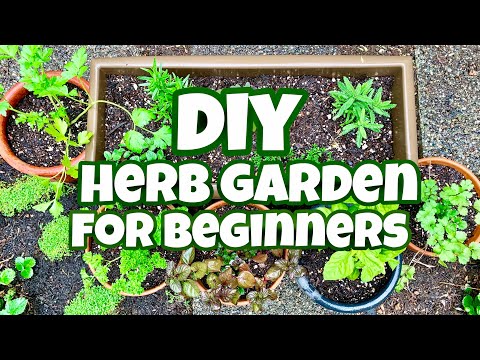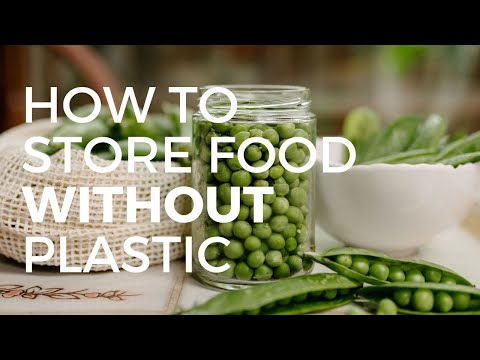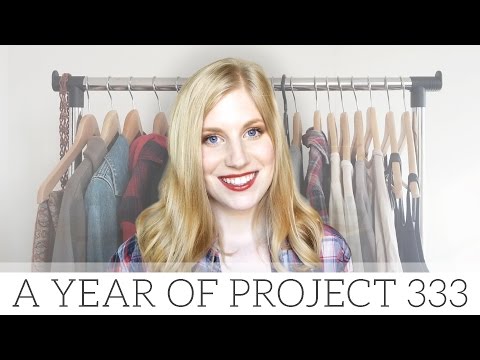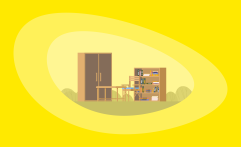27 Tips & Tricks for Sustainable Apartment Living
Impactful Ninja is reader-supported. When you buy through links on our site, we may earn an affiliate commission.
Learn more
Learn more
.
Hey fellow impactful ninja ? You may have noticed that Impactful Ninja is all about providing helpful information to make a positive impact on the world and society. And that we love to link back to where we found all the information for each of our posts. Most of these links are informational-based for you to check out their primary sources with one click. But some of these links are so-called "affiliate links" to products that we recommend. First and foremost, because we believe that they add value to you. For example, when we wrote a post about the environmental impact of long showers, we came across an EPA recommendation to use WaterSense showerheads. So we linked to where you can find them. Or, for many of our posts, we also link to our favorite books on that topic so that you can get a much more holistic overview than one single blog post could provide. And when there is an affiliate program for these products, we sign up for it. For example, as Amazon Associates, we earn from qualifying purchases. First, and most importantly, we still only recommend products that we believe add value for you. When you buy something through one of our affiliate links, we may earn a small commission - but at no additional costs to you. And when you buy something through a link that is not an affiliate link, we won’t receive any commission but we’ll still be happy to have helped you. When we find products that we believe add value to you and the seller has an affiliate program, we sign up for it. When you buy something through one of our affiliate links, we may earn a small commission (at no extra costs to you). And at this point in time, all money is reinvested in sharing the most helpful content with you. This includes all operating costs for running this site and the content creation itself. You may have noticed by the way Impactful Ninja is operated that money is not the driving factor behind it. It is a passion project of mine and I love to share helpful information with you to make a positive impact on the world and society. However, it's a project in that I invest a lot of time and also quite some money. Eventually, my dream is to one day turn this passion project into my full-time job and provide even more helpful information. But that's still a long time to go. Stay impactful,Affiliate Disclosure
Why do we add these product links?
What do these affiliate links mean for you?
What do these affiliate links mean for us?
What does this mean for me personally?
![]()
To live more sustainably in your apartment means to live both more resourceful and healthier. And luckily, it is possible to use a few tricks and hacks to make both happen for you in just a few simple steps. And that is what we’ll explore in this post.
You can live more sustainable in your apartment if you:
- Insulate everything and unplug your devices at night.
- Swap single-use items for reusable ones and then recycle or upcycle these.
- Buy local products and foods, esp. at zero-waste stores.
- Buy second-hand clothing and furniture.
- Use natural products for personal hygiene and to clean your apartment.
Living sustainably and more in harmony with the environment does not have to be challenging or costly. Here is a comprehensive list of lifestyle tips & tricks you can refer to for hands-on guidance.
Sustainable Living: An Overview
Below are several tips and tricks divided into easy-to-understand categories you can start implementing today to start working towards a more sustainable lifestyle. Check out this video for a comprehensive overview of sustainable living and the benefits it can bring into your lifestyle:
However, before getting started with the tips and tricks that are about to change your lifestyle, it is worth understanding sustainable living principles.
At its core, this choice involves taking up come challenges that can help you reduce your household and lifestyle impact on the environment. So, through your sustainability journey, you might focus on having a low-waste household, reducing energy consumption, or lowering the consumption of animal products.
Such changes can be highly beneficial for the community around you, the environment and the planet, and yourself!
Some changes are quick and painless for all, while others might require you to practice more to embrace them fully. In any case, your journey toward sustainability is your own, and you should allow for evaluations, mistakes (aka learning opportunities), and readjustments.
Let’s take the first steps in the right direction with the below tips and tricks – and some hacks too!
Energy and Resources
The first aspect of tackling when trying to live more sustainably in your apartment is the resources you use – and how you use them! We are all always more dependent on technological devices, appliances, lighting systems, and fixtures.
However, the world’s consumption of energy has been skyrocketing over the last years. It is not a secret that the energy we commonly use – deriving from oil, carbon, and gas – is extremely harmful to the environment.
Of course, the solution would be to switch to solar panels and energy deriving from renewable and natural sources. Yet, this is not always possible, especially if you rent an apartment or this solution is not available to you at the moment.
Here are other ways to optimize your energy consumption.
Leverage High-Quality Insulation
Insulating your apartment can help you make the most out of the resources you use. In winter, additional insulation allows you to keep your home warm and free of humidity, therefore lowering the need to switch on the heating or other appliances. And in summer, insulation works in the same way: it allows you to see the best results out of your AC system.
And when it comes to your insulation, it’s about all the little things that add up. And that help you to make your place both more sustainable and less expensive.
Check out this video guide for practical tips that you can implement right away:
Reduce Your Household’s Water Usage
Water usage represents an important factor when trying to embrace a more sustainable lifestyle. We are using water for most of our daily tasks, including brushing our teeth, having a shower, washing dishes, watering plants, and cleaning our clothes.
Let’s have a look at one of the main culprits: your toilet!
Today, the most eco-friendly toilets use around 1.28 gallons of water each flush, while standard toilets use about 1.60 gallons of water per flush. If you can install a dual-flush toilet, that is an excellent way to control how much water is wasted with each flush.
However, if you are not going to remodel your bathroom soon, a cheap alternative is inserting a cup or container filled with rocks or pebbles in the toilet tank. When the tank is refilled, it will need fewer gallons of water to be refilled – this trick can help you save as much as 10 gallons per day!
Check out this video for even more practical tips on how you can conserve water at home:
Drink More Tap Water
While bottled water has become the norm, tap water is a much healthier and affordable alternative to bottled water. According to FoodAndWaterWatch.org, bottled water in the US costs a minimum of $0.89 per gallon, while tap water costs less than $0.01 for the same amount.
Additionally, plastic bottles of water have been seen to be extremely harmful to the environment and our health, as only 12% of all plastic bottles are recycled. If you wish to have water with you in your apartment and outside, investing in a reusable bottle can help.
Compost Your Food
Composting food is an excellent way to get rid of most of your organic waste, which adds up to 28% of the total amount of waste. When food scraps and other organic waste reaches the landfill, it will take up valuable space and create methane, a harmful greenhouse gas.
Composting your food at home can be extremely easy, especially if you decide to use a composting bin such as a tumbler and bokashi composter. Everything you need to do is add food scraps and other ingredients to the bin and allow it to compost the mix.
Disconnect and Power Down Your Devices and Lights
We all use a lot of energy in our daily lives, and the amount is always rising. Indeed, we need the energy to charge our many devices and appliances, and several home systems run on electricity.
While this has made our lifestyles more convenient, it also adds to our energy usage. And it is important to understand that virtually all of our appliances also use up energy when they just plugged in.
So, deciding to unplug all of your devices and switching off all appliances when not in use (standby consumes up to 14% of electricity) can help you save money and energy.
Only Use Energy-Efficient Light Bulbs
Switching to more energy-efficient light bulbs is something that everybody interested in embracing a more sustainable lifestyle should consider. Indeed, just by using LED lights rather than standard incandescent bulbs, you can use as much as 75% less energy. These bulbs also last 25% longer, so you won’t need to change them as often.
Switch to Renewable Energy
While you might not install an array of solar panels, you should consider switching to a renewable energy provider. Indeed, you might check what providers are currently serving your area and switch to one that uses energy harvested from solar and wind systems.
And depending on your living arrangements, you could even install a small solar panel.While it might be converted to deliver only DC, it can still be a helpful backup that can help you save on the price of having to charge one or two of your devices.
And as a DIY project, you could even make your very own solar panels at home:
Upcycle What You Can, Recycle the Rest
If there is already a recycling system in your town, neighborhood, block, or building, make the most out of it. If not, you might decide to be the one to start a recycling system! You can do so by getting in touch by speaking with others in your community with the government body in charge of such initiatives.
But you know what’s even better than recycling? Upcycling! Repurposing what you’d otherwise recycle to make something awesome out of it. Check out these ten project for some inspiration:
Hygiene and Cleanliness
Pollutants, chemicals, and plastic features are in many products we commonly use, including shampoos, conditioners, and creams. Certain beauty products cosmetics have also been tested on animals and contain microplastic (Microbeads).
These are extremely harmful compounds in many aspects. Since they are not visible to the naked eye, they enter the sewage system without being seen. Since they are not degradable, microplastics end in oceans, where they are ingested by the fish that we catch and bring on our plates. Microplastics have been seen to lead to health complications when entering in contact with our skin,
Here is how to be more sustainable in your choice of cosmetics and beauty products.
Opt for Shampoo Bars and Soaps
Shampoos, conditioners, and body wash products are often packaged in plastic, and some of them even contain microplastics. For a more sustainable swap, you might consider opting for shampoo bars and soaps. These guarantee you to enjoy much more hair washes in a package that is much more compact and eco-friendly!
And while soap bars are relatively easy to come by, not all the places sell shampoo bars. So, what can you do in this case? Just make your own one!
Pick Cruelty-Free Cosmetics
The cosmetics industry has a negative impact on the environment, but not all products and models are the same. You can already make a difference by choosing products that are cruelty-free and vegan – so you can be sure that no animal has been harmed in the making of them!
Use Household Products to Clean the House
Unfortunately, pollutants are everywhere, and sometimes we don’t even realize how much we are dependent on them for everyday tasks. For example, plastic compounds can be found in laundry detergent, making it poorly degradable and extremely harmful to the environment.
Luckily, a growing range of cleaning products on the market don’t include chemicals and synthetic compounds. Make sure you read the label and opt for those that won’t harm your skin, clothes, and the environment.
But even better, it is also possible to use ingredients usually readily available in any household to clean. For example, bicarbonate soda, lemon, olive oil, or white or apple cider vinegar are potent ingredients that can help you get your home’s surfaces to shine.
But there are many more that you can use (and I bet you have quite a few of them at home right now). Check out twenty DIY opportunities for natural cleaning products in this video:
(Grocery) Shopping
Fighting the climate emergency is something that nobody can do alone, and no results will be visible until enough people embrace at least some aspects of sustainable living. However, swapping single-use items for reusable ones is only the tip of the iceberg (and you are probably not using these anymore anyway, right?).
Let’s have a look at some other basic tips to shop more sustainably now!
Shop at Zero-Waste Stores
Local zero-waste stores allow you to refill your containers and jars with eco-friendly products. This can help you reduce the amount of waste in your household and look after the environment by reducing plastic usage.
Check out the video below about a zero-waste grocery store. The only question I had afterwards is: Isn’t it crazy that now all stores are like this? I mean, we are so used to all the packaging that we don’t even notice them anymore!
Buy Local and Support Small Businesses
Sustainable living doesn’t only refer to the impact that our choices have on the environment. It also refers to the influence on societies, communities, and our wellbeing. Buying local products and opting to shop at small businesses allow your community to thrive!
And if you buy online, then make sure the product you have picked does not have to go through long delivery processes. Indeed, transportation, both via land and air, can create emissions. You can avoid such emissions by shopping at local stores or at least opting for products from your own country.
Use Reusable Bags When Shopping
Reusable bags are extremely long-lasting and help you cut down on the cost of plastic bags that you would otherwise get handed out.
And you can also pick the design you prefer if you make them yourself:
Food and Nutrition
If you are looking for a way to lower your household’s environmental impact, you might decide to look into your nutritional habits and choices.
Buy Organic Food
Make sure the food you buy is grown biologically or is organic. This is an excellent way to know that the ingredients you bring home are healthy and grown without the use of harmful chemicals.
Unfortunately, there are no global definitions or rules to define what organic food is. But in general, it is made without the use of GMOs, synthetic fertilizers or synthetic pesticides.
Check out the most important things to know before you buy the next produce with an “organic” label in this video summary:
Start a Herb Garden
Starting a herb garden can be an exciting project for the whole family and give you great satisfaction when your plants start to be useful for your recipes too! Depending on your area’s climate, you might decide to plant plants like mint, sage, chili peppers, or thyme.
Include More Plants in Your Diet
According to CarbonBrief, food production accounts for almost 25% of global greenhouse gas emissions, mostly produced by the meat and dairy industry. In turn, greenhouse gasses are one of the leading reasons for climate change.
Switching to a primarily plant-based diet can be the single most important strategy to reduce our environmental impact. Make sure you consider eating less meat or try a challenge such as “Meatless Monday” to start with. This gives you the chance to try this new lifestyle by yourself and decide what is best for you.
Opt for Eco-Friendly Storage
When storing your food, avoid plastic film. Instead, use glass pots and bottles, mason jars, and beeswax sheets. These are all ethical, reusable products that will keep the food safe and without the risk of contaminating with microplastics.
There are many more options to store your food without plastic. Want to see some of them? Sure! Check out eight of them in this video:
Clothing and Footwear
Another industry that has a significant negative environmental impact is the fashion industry. Today, this sector is responsible for over 20% of the global industrial water pollution, and over 1.5 trillion liters of water is destined to produce clothing items each year.
Such exploitation of natural resources can have disastrous consequences on many levels, including the amount of water used each year, pollution of waterways, destruction of wildlife and ecosystems, and deforestation.
Making some conscious choices regarding what we wear and deciding to opt for natural, sustainably-produced fibers can help you reduce such an impact.
Read the Label When Buying Clothes
The labels can tell us a lot about how the clothes we have picked are designed and manufactured. So the next time you buy that new item, make sure that it has been manufactured in a sustainable way!
Buy Pre-Loved Clothing Items
As seen, the fashion industry has been seriously impacting the environment, a trend that has been on the rise in the last few years. However, there is a positive aspect of this trend to consider: there are many more second-hand clothes and items!
Find out what options you have in your hometown or opt to shop online at websites such as Depop.
Not a fan of buying pre-loved clothing items? Then what about contributing yours? You could sell the clothes you don’t wear anymore to a second-hand shop. And give someone else the chance to fall in love with them. Or you might even give them to people in need. Either way, instead of taking up space in your apartment, you could help your community and the environment. A win-win if you ask me.
Try to Cut Down on the Number of Clothes You Need
Sometimes it can be difficult to just say “no” to another piece of clothing, especially without a clear objective in mind. If you wish to embrace a more sustainable lifestyle, but you are still a bit of a “shopaholic,” there are some challenges that might help you transform this aspect of your personality.
One of the best challenges out there – as well as one of the most loved ones – is Project 333. In this challenge, you will only be allowed to wear 33 items for three months!
Wonder how that would work for you? You can just skip ahead the learning curve get some tips and tricks from someone who did this for one full year (that’s kinda cheating but the other way round, right?):
Wash Your Clothes More Eco-Friendly
One of the greatest impacts that our fashion choices might have is related to the amount of water we use to wash them and keeping them clean. Each time you wash your clothes in your washing machine, you are using between 60 and 180 liters of water, which can be as high as a quarter of all wastewater of a household.
Of course, that’s nothing we can fully avoid, but there’s at least three things that we can do about it.
- Use the most water- and energy-efficient washing machine.
- Use the eco program and only wash your clothes when your machine is fully full.
- Wash your clothes with colder water if they are not too dirty.
Design and Furniture
Our home’s design is something we all take pride in and reflects our personal preferences and taste. Nonetheless, today’s world spends over $575 billion on furniture, which leads to millions of hectares of forests burned and tons of PVC plastic produced each year.
So, even if it is something you had not given much thought to in the past, it is worth understanding the impact that this industry might have on the environment. While you don’t need to miss out on having a cozy bed or designer sofa, there are more eco-friendly ways to shop.
Opt for Second-Hand Furniture for Your Home
As seen above, the furniture you pick for your home design can significantly impact the environment. Of course, you might decide to invest in new, high-quality, and rigorously sustainably-made pieces.
However, if the budget does not yet allow for this choice, you might consider opting for second-hand furniture and home decor. You can find interesting options on websites such as eBay or even in local vintage shops. If you love DIY projects, you might also be able to adapt any furniture found to the style you wish to have for your home.
Opt for Natural, Eco-Friendly Materials
Bringing nature indoors can help you look after your wellbeing and reduce the number of synthetic materials and chemicals in your home. So, you might decide to opt for natural fibers for your linen and clothes, such as cotton, linen, or jute. For your furniture and decoration, you might decide to stick to wooden items, plants, metal, and glass.
Live More Minimalistic
Minimalism is a trend that has started to interest an increasing number of people and homeowners. Minimalism is a lifestyle that promotes abundance through owning less. This way of living has been seen to yield incredible benefits for some, from improved health to a sense of freedom and improved savings.
While embracing the minimalist lifestyle does not mean that you have to renounce your favorite pieces of decor and furniture, you will need to pick what those valuable features are wisely. Minimalism also encourages you to counter consumerism. And to find high-quality materials and designs instead of fighting fast-fashion trends.
Decorate With Plants and Natural Elements
If you are looking to enrich your minimalist interior design, you might decide to use natural materials and plants to decorate your home. Introducing plants in any household can be an excellent way to bring nature indoors, improve the whole apartment’s air quality, and create an interesting focal point in any room. And, all this comes at an incredibly low price!
Use Natural or Low-VOC Paint
The materials and compounds we use around the house have a substantial impact on our wellbeing. Ensure you consider the VOC’s level (volatile organic compounds) contained in the paint you have picked.
These compounds can significantly compromise indoor air quality and create adverse health effects, making the environment harmful to the whole family.
Final Thoughts
Living a more sustainable lifestyle is not always easy, and everybody should follow a sustainability journey that reflects their preferences and goals. But at the same time, it is becoming more important every day to find strategies that allow us to reduce our environmental impact and conserve energy and natural resources.
Swapping single-use products for long-lasting solutions, saving on energy use and consumption, and opting for a greener way of living can all be excellent solutions. In any case, you should always be on the lookout for new ways to reduce your environmental impact – challenge yourself!
Stay impactful,

Sources
- Youtube: Howcast: What Is Sustainable Living? | Green Living
- UCS: Environmental Impacts of Renewable Energy Technologies
- Food and Water Watch: Tap Water vs. Bottled Water
- EPA: Composting At Home
- Planet Natural Research Center: Bokashi
- Home Water Works: Toilets
- Energy.gov: LED Lighting
- The World Counts: The environmental impact of furniture
- SCNM: Minimalism: Having Less Gives You More
- EPA: Volatile Organic Compounds’ Impact on Indoor Air Quality
- SustainYourStyle.org: The fashion industry is the second-largest polluter in the world.
- Depop
- Project 333
- BeatTheMicroBead: What Are Microbeads?
- Green America: The Ugly Side of Cosmetics
- CDC: Sustainable Lifestyle
- Smart Green Post: The impact of detergents on the environment
- Home Water Works: Clothes Washer
- Healthline: Vinegar: The Multipurpose, Chemical-Free Household Cleaner You Should Know About
- Carbon Brief: Interactive: What is the climate impact of eating meat and dairy?

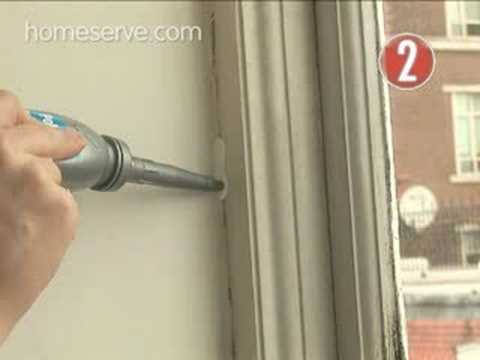
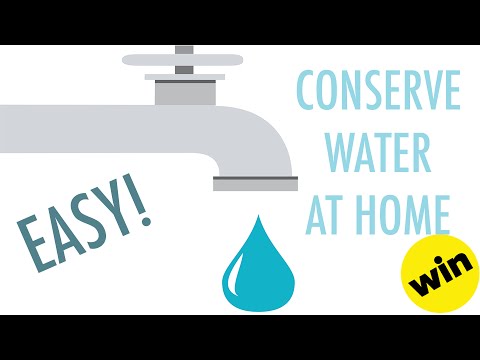


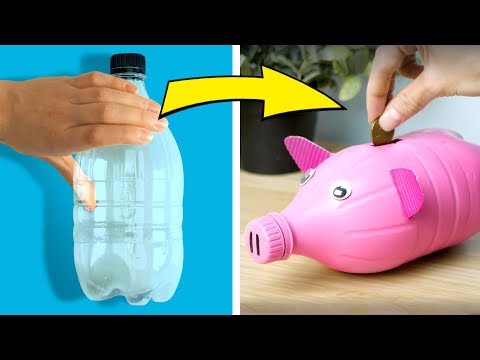

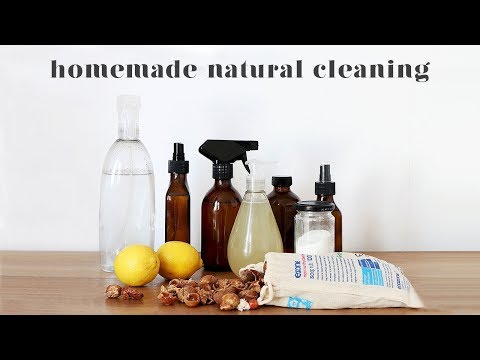
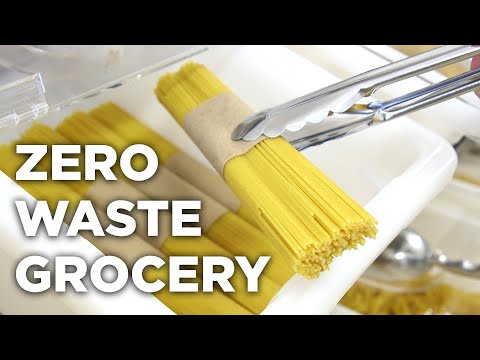
![DIY REUSABLE GROCERY BAG | How to make Foldable Shopping Bag | Tutorial for 2 sizes [sewingtimes]](https://impactful.ninja/core/cache/flying-press/47v6nNB666M-hqdefault.jpg)

